Exploring Istria (Premantura, Rovinj, Grožnjan, Pula)

Premantura
We spent a little over two weeks in Premantura, a small town just south of Pula on the coast of Croatia. Premantura is right at the entrance of the Kamenjak peninsula which makes it quite the amazing location. From where our apartment was, we could be in the sea within about a 10-minute walk. The town of Premantura is very small with a handful of restaurants, a couple of small grocery stores, a few cafes, and a few souvenir shops.
Over our two weeks in Premantura, we explored the entire coast of the peninsula which was a bit difficult in some spots. In some areas, the trail was very well-maintained and well-marked. In others, the trail was almost non-existent and we often had to turn around and try a different route. We would find ourselves surrounded by bushes with no way forward.
The eastern side of the peninsula was more developed and had a coastline that gradually fed into the sea. On the western side, there were fewer cafes (though these still existed) and a lot of cliffs which many used for jumping into the sea. We definitely preferred the western side as it was less popular, had views that were more spectacular, in our opinion, and more private areas to explore.
We were in Premantura for the first half of September which meant we were there for the end of high season and start of shoulder season. The first week, everything was bustling with people. When you enter the peninsula, there’s a large campground for both tents and RVs. It appeared that this was completely full. All of the cafes and shops were open and busy. Cars were mostly sporting license plates from Croatia, Germany, Italy, and Poland with Germany winning out hands-down.
In the second week, it was as if someone flipped a switch and sent everyone home. Each day, the campground became more and more desolate. Shops and restaurants were less full and some closed up for the year. The weather also shifted and there were some days that mirrored the first week — low 80s — and others with cooler temps and rain.
As you can probably guess, we much preferred the second week. It was good for us to be there for the first week as well so we had a better understanding of the area and what it’s like during high season.
While staying in Premantura, we did a few day trips to other parts of Istria, or Istra in Croatian.
Rovinj
We did two-day trips to the coastal town of Rovinj. Some folks had recommended visiting beforehand so we knew it was a must-see.
The old town area is on the sea and is quite picturesque. The cobblestone, narrow streets are lined with lots of boutique shops and cafes and the occasional gaps between buildings provide a view of the water. It was a lot of fun to get lost and wander.
The town itself continues past the old town section and feels to be a more typical, modern Croatian town with wider streets, some chain grocery stores, and plenty of eateries.
There is a huge forested park, Forest Park Golden Cape, that borders the sea just outside of the old town area. To get to the park from the old town area of Rovinj, we had to walk through a very fancy resort with beachside loungers that were insanely expensive. We were a bit unsure if we were on the right track but after the resort, the forest park appears. Lots of people were biking and walking through the wooded area and others were sunbathing and swimming at the beaches lining the park. One could easily spend half a day soaking up the greenery.
On one of our day trips, we also went to Lim Fjord, which is not a fjord, but is gorgeous nonetheless. We walked along the shore a bit and were amazed at all of the fish we saw swimming and jumping. We also drove up to the view point from the road which was worth it.
Grožnjan
Located pretty much in the middle of nowhere on top of a hill, the town of Grožnjan felt like a fairytale. It is a tiny (164 inhabitants) that has an Italian majority, the only town or city in Croatia where that is the case. It is known as a “town of artists” — there are galleries throughout the town and it hosts various art, music, and film festivals during the year.
Given its size, it’s possible to walk the entire town in about 20 minutes if you are going slowly. But, I could also see staying for a few days and love being immersed in the stunning views, tiny streets, and ancient buildings. And while it will take you more time to get to Grožnjan then you likely spend there (no matter where you are coming from), I think it is worth the drive. It is also about 30 minutes away from one of the amazing Agrotourism places we visited (Agroturizam Selo Mekiši)!
Pula
Despite being so close to Pula, we only spent an afternoon in this larger city. Our primary purpose for visiting was to see the Pula Arena which is one of, if not, the best preserved Roman amphitheatre.
The Pula Arena was quite remarkable and it felt a bit odd to be walking down a Croatian city and all of a sudden be staring at a 2,000+ year old Roman structure. I realize that that statement sounds a bit naive and ignorant. The more time I’ve spent in this part of Europe, the more I’ve come to understand about how connected all of these countries once were, more so than they are today. I’ve also learned how much history I don’t know, especially pertaining to eastern Europe. All of that to say, the Pula Arena is definitely worth visiting if you are in the area.
We also made a stop for lunch at a recommended spot, Pizzeria Jupiter. Despite seeing pizza almost everywhere since we arrived in Croatia, we hadn’t had any and, by this time, were definitely craving it. This place did not disappoint! We had a delicious Greek salad and the Istria pizza. They had a great rooftop deck with a retractable cover for the rain. Bonus — it’s just down the street from the Pula Arena.
Outside of those two main stops, we wandered the streets a bit and explored some shops. It had a bigger city vibe, also on the sea, with a more balanced mix of locals and tourists. I’m sure that more time could absolutely be spent in Pula.
Overall, a couple of weeks in Istria felt like a good amount of time to really get a feel for this part of Croatia and get to explore a few different locations. A lot of our time was spent going for long walks and swims in the sea and, even without the other explorations, that would have been a fabulous two weeks.
Tips for Istria:
- Even though Istria is known for truffles, if you are interested in truffle hunting it’s a lot cheaper to do this in Split.
- Google reviews for restaurants seem a little less reliable here — there were definitely some restaurants with a 4.5+ rating that would be in the 3-star range elsewhere. As eating out is more expensive here, I’d recommend doing a bit more research than normal before selecting a restaurant.
- To enter Kamenjak near Premantura, you have to pay, even if you aren’t staying over. However, you can enter for free on foot or by bike. It is absolutely an area worth exploring and you can see it all on foot so if you are trying to save money, rent a place outside of the area and head in without a car.
- Renting a car is absolutely necessary for exploring Istria. And be prepared for pretty hefty tolls on some of the roads. For some destinations, it’s possible to take a different route that doesn’t even tolls so check that out beforehand.
- Make sure to have change on-hand for parking in places like Rovinj as a lot of the parking machines do not accept bills or cards and parking is strictly enforced.










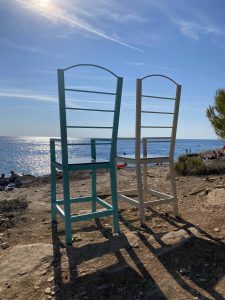




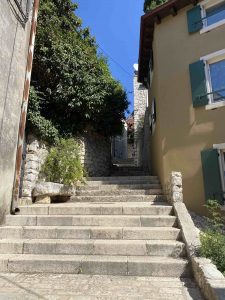




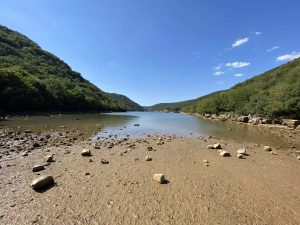
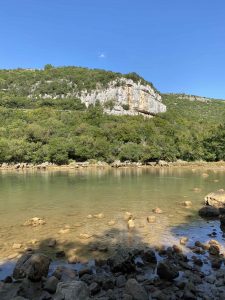






















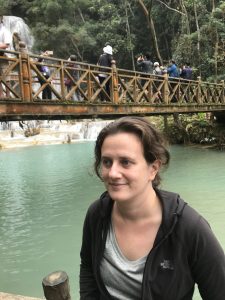
One Response
Dear Julia,
I loved this description as well as all of the others you kindly sent me! Thank you ever so much! I had the feeling I was traveling myself. I think that your style is literary and elegant. The information is exactly what I enjoy reading. If you feel you have learnt a lot, I do too. The two things that struck me in your writing are: how beautifully nature is preserved in this part of Europe (thankfully!) and how history is present and alive in every cobblestone. I feel privileged and grateful to have access to your blog!
Keep on writing as you travel! Stay safe! Love, J&E